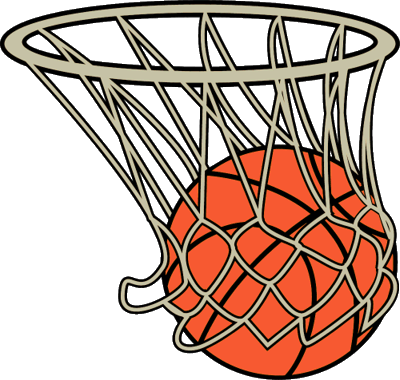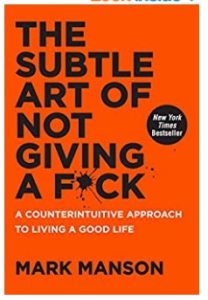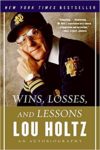 I am always surprised by how few players understand the tools that they have available to them as defensive players on a basketball court. Too often players rest on defense and don’t focus on what will help their team take the ball away from the opposition or make it more difficult for them to score. If a player applies the skills described below, they can go from reacting to the offense to taking control of their opposition’s offense and dictating what they do.
I am always surprised by how few players understand the tools that they have available to them as defensive players on a basketball court. Too often players rest on defense and don’t focus on what will help their team take the ball away from the opposition or make it more difficult for them to score. If a player applies the skills described below, they can go from reacting to the offense to taking control of their opposition’s offense and dictating what they do.
The top defensive skills that every player should use on defense are Position (distance, charge,steering), Jab Step, Face Guarding (the right way) and Weak Side Steals.
Position. This is the most basic form of defense and it us where most players stop. Why? Because it may be “good enough” to be considered “defense” but I would challenge you to go beyond just “good enough” and take your defense to a higher level.
Within “position defense” there are many aspects that players can apply. In particular, there are a number of ways to guard a post player (front, side or behind) and it depends on your relative size as well as the help that you can expect from your team mates on defense.
Relative distance from the dribbler. In terms of position, I often see players back away from their man when they think that they are not quick enough to stay with them. They hope that the added buffer will give them more time to react and prevent their player from scoring. What usually happens though is that they allow the offensive player to build up momentum and drive by them even faster. As Homer Simpson says… D’OH !
What’s the solution? This is going to sound counterintuitive but pay close attention. Instead of backing off, the answer is … Get closer. Much closer. It is almost like wrestling because the offensive player can’t dribble in front of themselves (because the defensive player is there and can steal the ball) and any move around the defensive player will require more effort than it would if the offensive player is given room to move.
Will you get beat when you are playing up-close, in-your-face defense? Probably, but you will make the offensive player work for it. You might even pick up a charge if the offensive player gets too physical. The key is how you (and your team mates) react on defense when you get beat…
What happens when you get beat? Two things. First you stop shuffling, turn your hips and RUN to catch up and, hopefully, pass the offensive player so you can stop them or at least control where they can move. Secondly, it is critically important to stay in contact with your offensive player and, ideally, steer them in a direction where your team mates (or a sideline) can provide help defense. This means that if they drive by you on the right side, you don’t let them come back to the left side. It is a common mistake for defensive players to give up once they are “beaten” by the offensive player and basically let the offensive player continue toward the basket.
Why do I have to stay with the ball handler? Aside from preventing them from returning to their strong hand, you want to be ready to trap them when your team mate comes over to help. This is a great time to steal the ball since the offensive player’s options are limited and it should be easy to anticipate what they will do.
Take the Charge. This is related to playing position and can be done by either the primary defender or someone helping stop a drive. If the primary defender is doing their job and “steering” the ball handler, the help defender can often set up and take a charge. The key for a help defender in this situation is to remain active and ready to prevent a pass to your man.
Jab step. By making a move at the offensive player, you are seeing how they will react. Most players have a preferred hand that they like to dribble with and once you know which one it is, you can anticipate where they might like to go and either get in the way (play position) or fake like you are going to get in their way (using a jab step) to force the offensive player to react. This is an important way for a defensive player to take control of the offensive player and limit their effectiveness.
Face Guarding. This is a defensive skill that relies on using your eyes as well as the eyes of the offensive player. In short, most offensive player’s eyes follow the ball when it is being passed to them. This can give a defensive player an insight into where the ball is coming.
Why would someone pass the ball when you are there as a defender? Because when you are face-guarding, you have your back to the ball and they think that you can’t see it… but you can see where it will go based on the eyes of the offensive player.
Can the offensive player beat someone who is face guarding? Sure, but it requires an offensive player to recognize what you are doing (which they might do after a steal or two) and then they would have to consciously look somewhere else while following the ball with their peripheral vision. It can be done… but in many cases, in the heat of competition, face-guarding is not recognized and the defense has the advantage.
Weak side defense – set up the steal. This is another area of Man-to-man defense that is often overlooked. The weak side is the side of the court AWAY from the ball handler and most coaches teach players that they should split the court and “build a wall” so that the ball can’t come over to their side. This is good in theory but too many players forget that a long pass is one that should be intercepted. The longer the pass, the more time you have to get to the ball.
Why aren’t more long passes intercepted? Because weak side defenders lose sight of what the ball handler is doing and they don’t see the pass until it is well on it’s way. How can this be changed? By knowing 1) when you expect the ball handler to pass and 2) seeing the clues that they are going to pass in your direction. If a ball handler is about to dribble into a trap and they are a good offensive player, they will be looking for someone to pass to BEFORE they get to the trap. If the ball handler looks toward your man, it is likely they will pass to them. If it is a long pass, the throwing motion will be bigger than a short pass (depending on the strength of the ball handler) and if you are watching the ball handler, you should be able to see it start so you can get a jump on the pass and intercept it. This same approach can be used on the strong side even when the pass might be shorter. By anticipating the pass, you gain a huge advantage over the offense and can force more turnovers.
Conclusions re: M2M Defensive Tools:
Coach Wheeler on M2M Defense…
“Defense should never be passive and reactive. It should challenge the offense and make it difficult for them to do what they want to do. If someone can call a play, your defense is not working hard enough. A successful defensive team drives the offense more than a little crazy and pushes them out of their comfort zone.”
Will you get beat? Probably, especially if the other team is very good. But you will get beat more often if your defense is passive and reactive. As a player, won’t you get beat by your man? Certainly. This is one thing that many coaches don’t want to address. They tell players to “work harder” and get in front of their man. This is great if you are faster/quicker than the offense, but what happens when a player can’t stay in front of their man? Shouldn’t there be a plan for this situation? Especially since there is almost always a mismatch somewhere on the floor and a good offense will figure out how to exploit it. That is where TEAM Man-to-man defense comes in along with the skills mentioned above.
What do you think? Are there other M2M defensive tools that you find are highly successful with your teams? I would love to hear your ideas and opinions. Would you like to see a video showing how Coach Wheeler implements / teaches these ideas with a team? Please leave a comment below.


 As I interviewed for various high school varsity coaching positions, I could see that some of the people on the selection committees seemed to be wondering “Why does he think he can take our school’s basketball program, which may have had only a handful of wins last season and establish a winning tradition?”
As I interviewed for various high school varsity coaching positions, I could see that some of the people on the selection committees seemed to be wondering “Why does he think he can take our school’s basketball program, which may have had only a handful of wins last season and establish a winning tradition?”
 There are a number of ways that meditation can be used by athletes to Train Your Brain to perform better both on the court or in the classroom. Some examples of the various types of meditations presented by Coach Wheeler include “No Regrets” meditation, Visualization and Mindfulness meditations. These and others will be discussed in the article below.
There are a number of ways that meditation can be used by athletes to Train Your Brain to perform better both on the court or in the classroom. Some examples of the various types of meditations presented by Coach Wheeler include “No Regrets” meditation, Visualization and Mindfulness meditations. These and others will be discussed in the article below. There are 5 key parts to becoming a consistent, successful shooter in the game of basketball. They are simple to understand but only the very best players actually
There are 5 key parts to becoming a consistent, successful shooter in the game of basketball. They are simple to understand but only the very best players actually  If you have not seen my previous Mental Toughness post:
If you have not seen my previous Mental Toughness post: 
